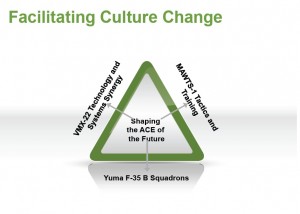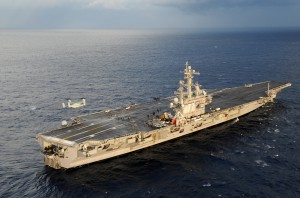2013-01-04 We have just posted our latest special report of 85 pages on the USMC approach to innovation in shaping the Air Combat Element of the future.
The Marines have stood up their first squadron of F-35 Bs at MCAS Yuma.
But the Marine Corps approach to the aircraft is built on recognition that in addition to its role as a strike aircraft, it has C2 and Information Warfare capabilities, which will make it a central piece to the ACE or Aviation Combat Element of the MAGTF.
To shape the approach, to determine the evolution of the aircraft is firmly rooted in a triangular approach taking shape at Yuma.

Two squadrons will be established and are the operators. MAWTS-1 will develop tactics and training for the F-35 B in conjunction with the other aviation elements for the ACE.
And VMX-22 will focus on the technologies and systems of the platforms making up the evolving ACE for the MAGTF.
This special report focuses upon the process of setting up such an innovative combat development approach and using it to inform deployments to the Pacific.
Notably, interviews with the 7th USAF Commander in South Korea, Lt. General Robling, MarForPac, and with members of the team shaping the new USS America class ship to be home ported in the Pacific and carrying the new combat capabilities are included to underscore how these capabilities might be used.
It also reaches back to the F-35 training center at Eglin where the pilots and maintainers are being trained for Yuma among other locations for the joint and coalition partners.
But the story really starts with the evolution of the Osprey. And so we start with a look at the Osprey at 5.
https://sldinfo.com/the-ace-of-the-future-yuma-and-beyond-2/


